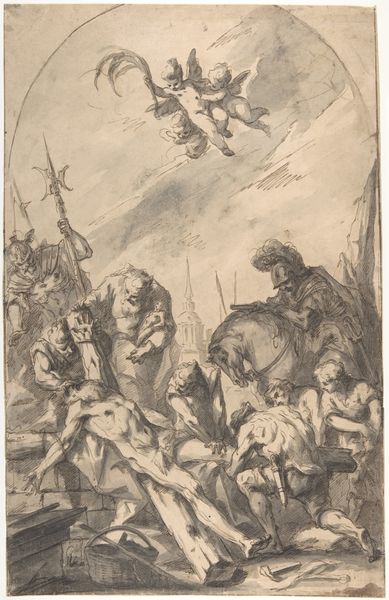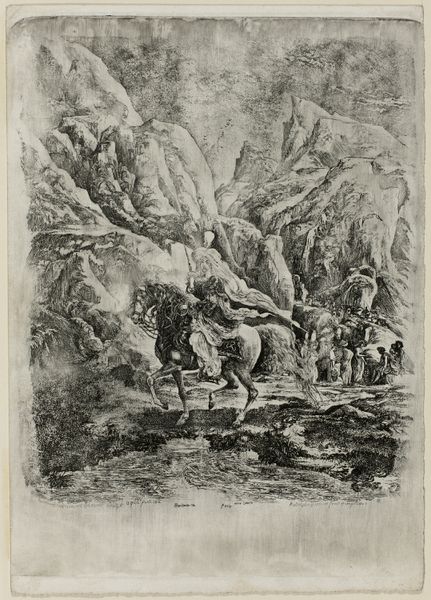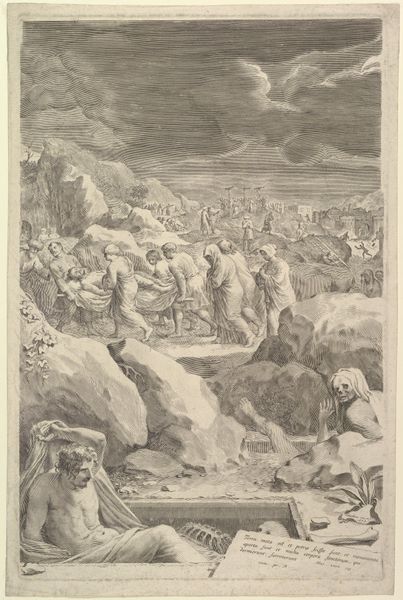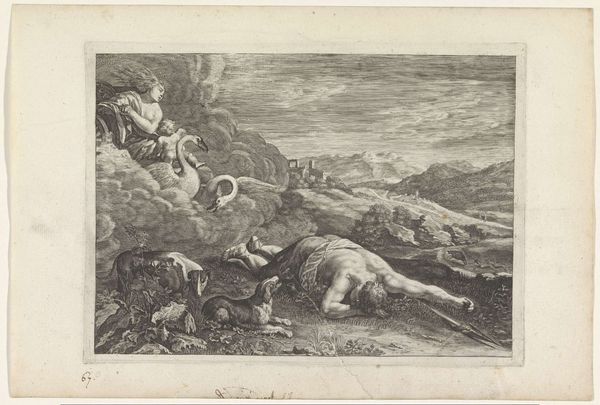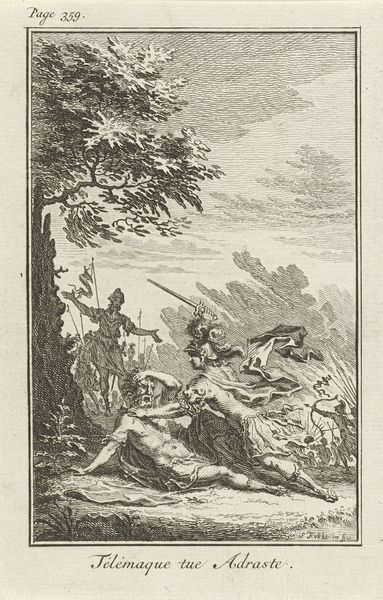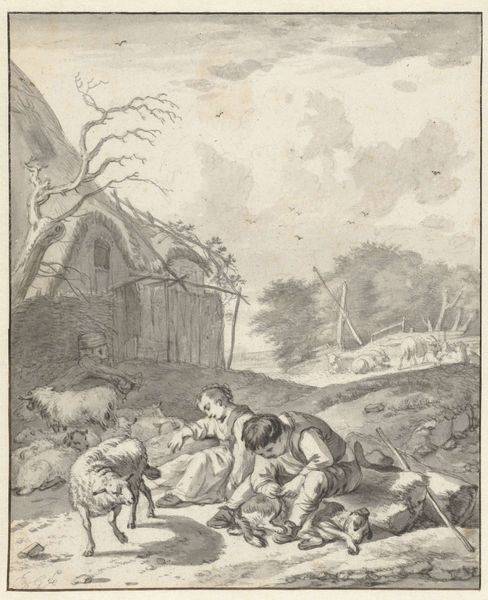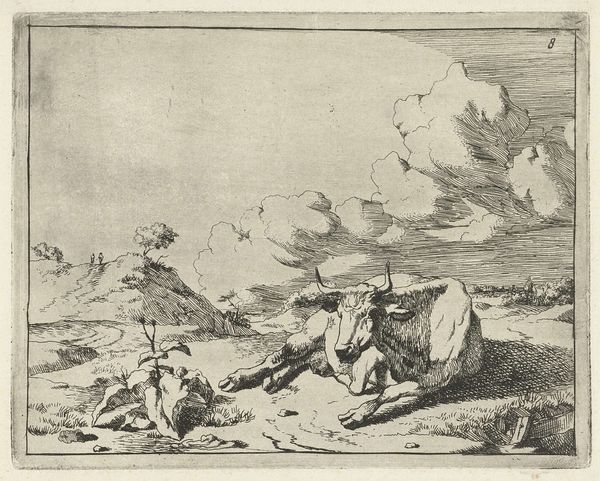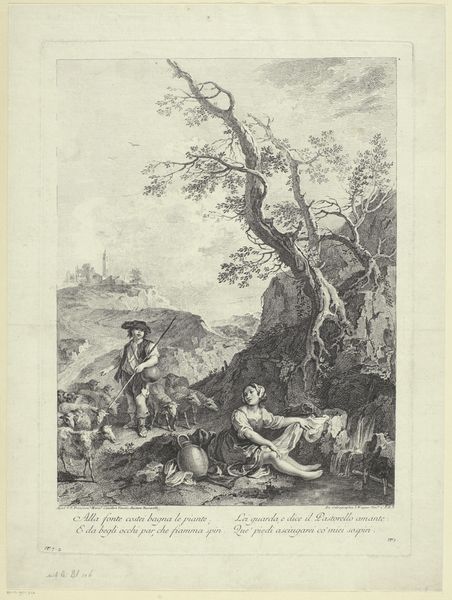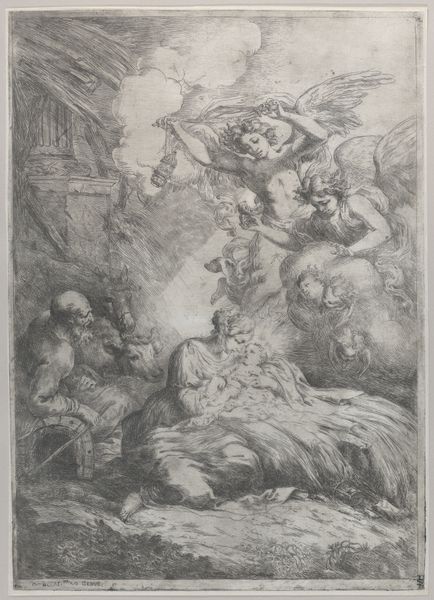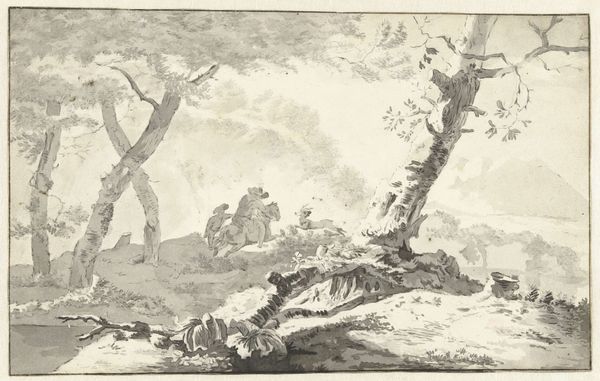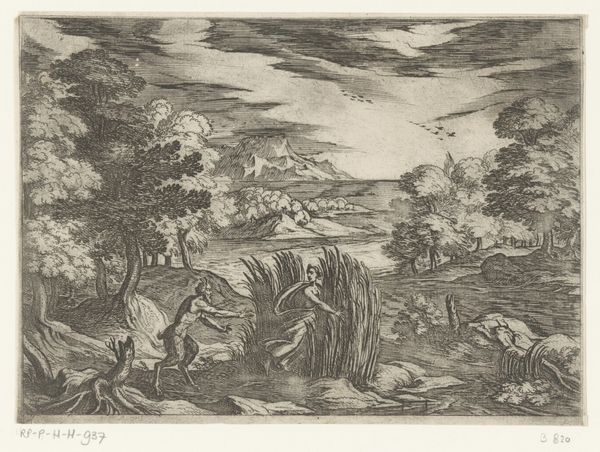
drawing, paper, ink
#
drawing
#
ink drawing
#
narrative-art
#
baroque
#
figuration
#
paper
#
ink
#
watercolour illustration
#
watercolor
Dimensions: height 220 mm, width 186 mm
Copyright: Rijks Museum: Open Domain
Editor: This is Gerbrand van den Eeckhout's "The Sleeping Disciples," made with ink on paper sometime between 1650 and 1653. It's striking how much detail he gets with just ink; there's almost a dreamlike quality. What do you see in this piece? Curator: It's a work that breathes quietude and human frailty. Eeckhout really captured that heavy-lidded feeling of resisting sleep. Look at the composition: these slumped figures, almost melting into the landscape… then our eyes drift upward to a scene unfolding in the clouds, as if reality itself is shifting and dissolving. Don't you think? Editor: I do! That celestial scene is almost like a little vision within the drawing, totally separate from the disciples' exhaustion. Is that a typical thing for Baroque art, these layered realities? Curator: In a way. There’s this Baroque interest in drama, of course, but also in exploring interior states. Eeckhout seems to be inviting us to consider their inner world as much as their physical predicament. And that sketchy, loose style lends itself so beautifully to evoking this atmosphere, wouldn’t you agree? Almost ghostly. Editor: Definitely. It’s interesting how that sketchiness makes it feel both very detailed and unfinished at the same time. I’m wondering, do you think he wanted the viewers to relate with the disciples feeling sleepy and worn down? Curator: Absolutely! There is an undeniably vulnerability in it. Eeckhout’s drawing is a study in capturing fleeting, deeply human moments that tie into a grand narrative, reminding us of our shared vulnerability. He's offering us a window into their very human experience of faith and fatigue. Editor: So, it's not just a bible scene, but also about empathy and being really, really tired? Curator: Precisely! The magic of art lies in its ability to express human stories that exist independently of religion and across different periods in time. Editor: This piece is more profound than I thought at first glance. Curator: Art, you know, isn’t merely *seen*; it's *experienced.* It mirrors our world in surprising, delicate strokes of genius.
Comments
No comments
Be the first to comment and join the conversation on the ultimate creative platform.
